The Grail Myth is the True Soul of The West
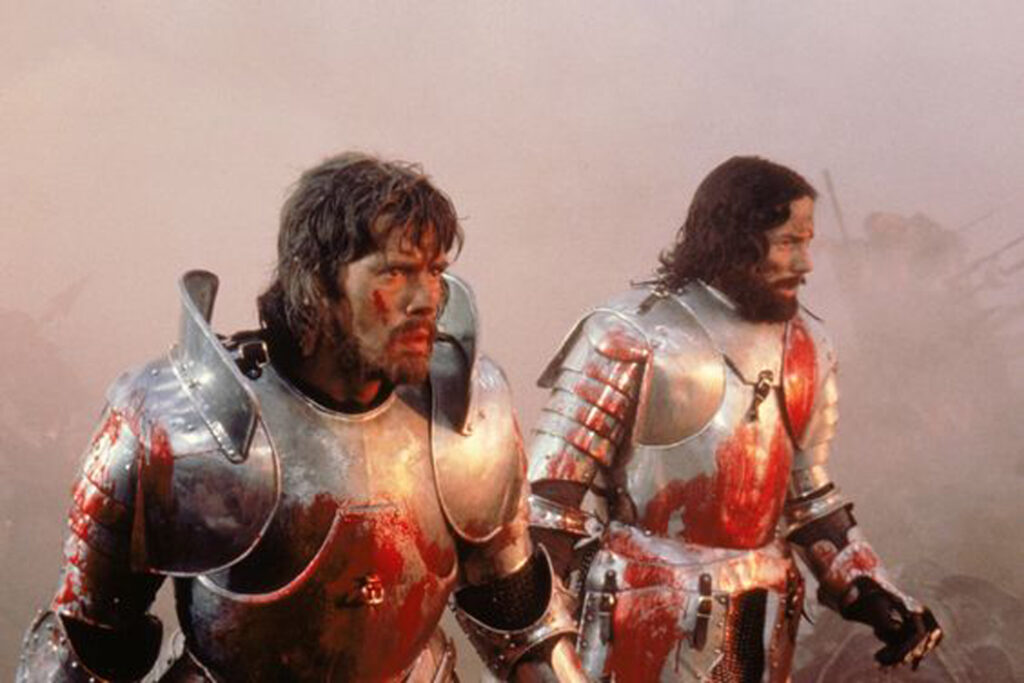
“Yet my heart still strives towards the heights. I don’t know why it lives like this, why my left breast so swells. Oh, whither is my desire hunting me?”
One of the most unique qualities of the Faustian West is the hotbed of debate on its true mythology. Few contest the Homeric foundation of Hellenic culture or Atum’s role as the progenitor of the Egyptian soul. The West, however, has from the onset worn a variety of masks that have all been heralded as its true face. The primary dualism at play is “Christian vs pagan,” with both sides having equal claims to validity, at least on the surface.
The pagan side will say that Western Europe was initially Eddic, driven by its lust for war and dreams of the mead-halls of Valholl. The Christian will write this era off as naïve savagery, fulfilled and redeemed by the works of the Roman Catholic Church. Both of these would seem correct from a certain perspective, creating the conditions for an unsolvable historical dispute. But as with all things the truth lies deeper, beyond the reductive grasp of the rabble.
The quintessential trait of the Germanic West is a yearning for infinity. The desire of the individual to dissolve all boundaries and launch headlong into greater unknowns. This presents a problem not found with other culture-souls in regards to classifying it by religious terms. By default the inclination towards the infinite means that the subject will be highly resistant to, if not incompatible with, a neat categorization of its identity. As perspectives broaden and adapt to each new height, so too does the “concrete” form of the perceiver.
The Classical man was who he was, carrying the static model of the polis within him through every travel. The Magian individual never “was” in the first place, existing only as a canvas for the eternal interplay of good and evil. The Faustian man is rooted in the “I,” more so than anyone before him. He forsakes the stable familiarity of the hearth for the sprawling forest, in all its terrifying solitude. What I propose is that on one level the Faustian culture is both Christian and pagan, but in its heart of hearts it’s neither.
In the final analysis, paganism and Christianity were both means to an end, tools with which the Faustian was able to break the bonds that restrained it and fully express its unrivaled depths. It lay incomplete in the Viking raider, who possessed the prerequisite warrior ethos and will-to-power but lacked the universalist mandate to push “to the ends of the earth.” With the influx of Christian missionaries, the final piece to the puzzle was made available and quickly subsumed.
Julius Evola, for whom the Grail mythos was the foundation, identifies three different cultures as the primary elements of medieval Europe. These are Nordic paganism, Christianity and ancient Rome. The ethics, class structure, and way of life bear the indisputable mark of the Nordic, visible in the feudal system and knightly code of conduct. The Christian part invigorated the Nordic spirit by returning the sense of a higher transcendence, a broader scope borne of supernatural restlessness, that Evola contends had largely been depleted in the Eddic culture at that time. But one must also account for the Roman concept of the universal regnum, the eternal reign of an archetypal emperor. This set a horizon much higher than anything previously inhabiting the Nordic view, and thus “from the type of the mere warrior, the figure of the knight arose.” In this synthesis we see the emergence of the Grail hero, the purest mythological image of the Western man.
Of course, there are other elements at play such as the Islamic world and Gnosticism. The former provided an influx of magical, exotic imagery that the Grail hero found a counterpart in, a Feirefiz to the Templar’s Parzival. This would lend an explanation as to why the Templars were accused of dealings with the Muslims. The Islamic world had its own Templar equivalent in the Order of Ishmaelites, and its own Grail mythos in Arabian Nights. Both East and West were ignited by suprareligious initiatory orders driven by divine mandate to possess the “Holy Land,” and go beyond the boundaries of their culture’s tenets to do so. One could say that the Crusades and its surrounding conflicts were a result of both sides feeling a unified aristocratic call to adventure and conquest, one rising from a wellspring much older than the religious dogmas used to theologically justify the campaigns.
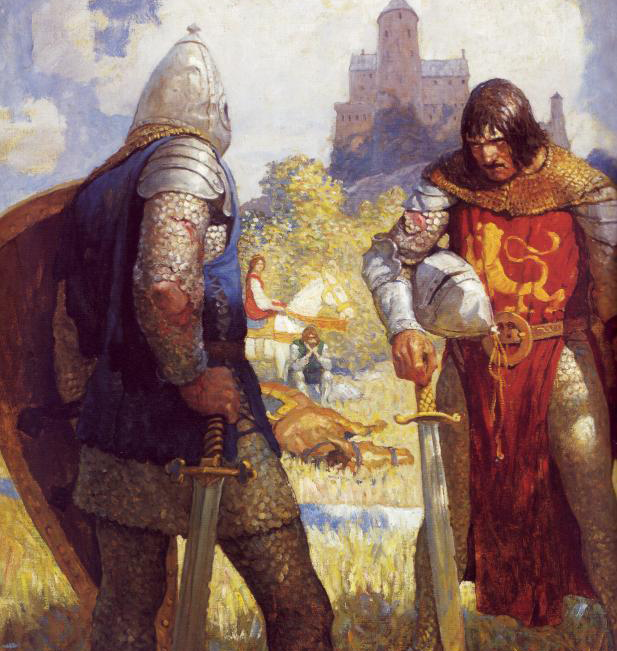
With a bit of the background laid out, we can now turn to the Grail mythos itself. Evola characterized it as the hero myth from the primordial Hyperborean-Olympian culture, the precursor from which all the hero myths of the civilized world are downstream. Joseph Cambell also saw it as a sort of universal monomyth, with many of its core themes being the transcending of dualities into a higher unified path. The proper “canon” Grail works of Cheten de Troyes or Wolfram von Eschenbach were merely the reemergence of primordial symbols previously appearing in the pre-Christian Celtic world, and refracted through the lens of Germanic Christianity. The Grail had taken the form of a stone, brought to Ireland by the Tuatha de Danaan after their exodus from Avalon, whom were later recast as angels exiled from Heaven for remaining neutral during Lucifer’s rebellion.
As a quick but important aside, the troubador poetry of the medieval era is a perfect microcosm of the metaphysical tension at play in Christianized Europe, particularly in regards to Love. It’s necessary to note that of all the myriad forms of love, I am specifically referring here to amor. This love, the passion of the European countryside, combined and transcended the ideas of agape and eros. It was a spontaneous fire lit between two individuals, allowing the lovers to synthesize in a way that not only preserved each person’s spirit, but elevated it to something more. This was not merely duty-bound union nor carnal eroticism, but an intiation into higher mysteries not unlike a Western counterpart to tantra.
This amor found itself under attack by the imported concept of sacramentally arranged marriage. No longer was the European man to let the passion of his heart lead him to his destined partner, he was instead to be assigned one by the Church’s authority. The troubadors represented a rebellion against this stiflement, going so far as to call themselves warriors of love. The Germanic blood-spirit was not going to take this incursion lying down, and its sentiments permeated even outwardly Christian works. Recall Dante’s Beatrice, whose light was said to obscure even “Christ’s sun.”
One can see a similar thematic pattern in the Grail mythos taken to even further lengths. Parzival finds that his country has become the Waste Land, disenchanted and cut off from the source of its virile energy as a result of a mortal wound to the King. The people languish in a sterilized facade, forced to appease rulers not there by merit. To hold beliefs unaligned with their Nature. Only the emergence of the Grail hero, an emblem of their true mode of Life made manifest among the symbols of the time, can redeem them. The pagan warrior infuses the living spirit of his blood into the imposed imagery of the Church, and becomes something higher that transcends both as a result. He represents the revival of a supernal order that both the Saxon warrior and the Latin priest are derived from.
The Templars, with whom the Grail quest is most closely associated, were a secretive hierarchical initiatory order. In contrast with mainline Christianity, whose knowledge is shared freely among all who accept the teachings of Christ, the Templars possessed many a close-guarded secret available only to those who were found worthy of it. In this regard they were more akin to the mystery cults of Eleusis or the Gnostics than a universalizing religion aiming to bring the masses into the fold. Absent are the sentiments of Paul, who once instructed Christians to refrain from speaking in tongues around others, as such utterances brought nothing that the whole group could understand.
Likewise the Grail only appeared to a select few, veiling itself from the unworthy. Knights fought perilous battles, braved harsh wildlands, just for the chance to bask in the presence of this all-providing vessel. A motif of individualism pervades these myths, as even the knights of Arthur’s court were said to have “each entered the forest at a spot he himself had selected, where there was no trail or path, at its darkest point.” This journey does not present itself as one achievable by the common man, the majority that the Church reaches out to. Instead it calls out to the differentiated type, one who strives for something beyond the mundane, testing himself against inaccessible heights.
We can turn again to Spengler, who stated that the very concept of refined interpretation in things such as art is a fundamentally Western phenomenon. The sculpture or fresco of the Classical man possesses no “depth” to speak of. Its message is communicated clearly to all who behold it, from the common man to the greatest warrior. Meanwhile, Western culture has schools of “experts” for even the most subjective topic. The works of Shakespeare or Goethe, films like 2001: A Space Odyssey, Pink Floyd’s Dark Side of the Moon, all of these have infinite branches of critique and interpretation surrounding them and giving them ever-expanding meaning. The uncultured peasant of the countryside, the average joe in the suburbs, knows and cares very little of how deep the creator of his favorite art piece’s intentions might have been. Thus we yet again see how the latent tendency towards hierarchy in the Faustian culture-soul reaches from top to bottom.
Given this, we are forced to notice an impassable rift between the Christian idea of equality and the hierarchical Faustian spirit. How then can we in good faith conclude Christianity to be the religion of the West and call it a day? How can we do the same for Nordic paganism despite the West’s inclination towards transcendence? Only the myths of the Grail, the exploits of Parzival and Arthur’s court, possess every prerequisite towards such a title. These myths are completely unknown to the average Western citizen in all but the most cursory fashion, which gives them unrivaled purity as a distillation of the Culture. As one flips through the pages of Eschenbach’s magnum opus, he is glimpsing into the soul of the Homer of the West. It was no coincidence that as Wagner composed the swan songs of Western art, he drew much of his inspiration from the likes of Eschenbach and Gottfried.
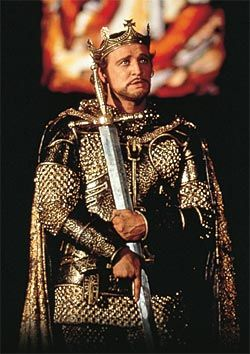
As we stand today on the precipice of the Abyss, with the putrefaction of the Faustian corpse fully underway, it may be that we yet have a way forward into a future state of Being. In the final entry of Joseph Campbell’s Masks of God tetralogy, he heralds the resurgence of a “creative mythology” in which the individual finds himself once again connected to the realm of timeless mythological truth, and projects its energies into his own waking life. This is the default state of being in Man, who in the most primitive hunter societies experiences a highly individualistic communion with the Divine via vision quest. Even the shaman who guides the tribe is beset by visions from spiritual familiars known only by him, which are then conveyed secondhand to the group.
These fathomless, very personal depths eventually gave way to the more communal nature of the planter tribe with the advent of agriculture. Initiation rites became less of a solitary vision quest, and more of a group initiation in which the young boys had very little room for individual interpretation. The shaman was replaced by the priest, whose wisdom derived from a strict traditional order. Religious ceremonies had little value without a certain amount of participants. This shift in consciousness can be seen in all cultures as disparate groups coalesce into a concrete society.
This is all well and good when the traditional institution is connected with the Source, which is to say the mythological realm. In that time, one could argue that it was foolish for the individual to attempt to find meaning outside of the prevailing religious institution. The Baroque West was pushed to its heights on the back of the Church, a movement only made possible by mass self-sacrifice to the cause. However, this forfeiture of the individual’s myth-making capacity to the collective creates a debt that must eventually be paid. All institutions are organisms with a life cycle of their own, and as time passes those institutions become bloated, lose their way. Their connection to the Source is severed. They become less of a Creator and more of a Demiurge.
However, they still occupy the space between the individual and the Source, and thus no one has access to it. The whole of Man has been barred from the land of Avalon. The Grail has left him, and he finds himself lost in the desolate Waste Land once more. But perhaps in its twilight, the Faustian culture possesses a unique means of escape from the sinking ship. With its tendency towards the universal, it has manifested in thinkers like Bastian who identified the difference between elementary and ethnic ideas. The former can never be directly experienced, only approximated through the study of the various ethnic ideas they manifest as. You will never see the Divine Mother or the Hero totally divorced from a localized form such as Tlalteutli or Theseus. Still, the identification of the faces beneath the masks allows one to look past the corroded forms of today, and seek to create a purer vessel for the eternal ideas to inhabit. Late Western man has been gifted a “springboard” to vault himself to the other side.
Now that these institutions have weakened in the mind and heart of Man, and the metaphysical substratum becomes a spiritual free-for-all, the differentiated individual possesses the space and freedom necessary to walk his own path. The “hero’s journey” becomes an option once more. The lion is free to bring overdue comeuppance to the dragon of “Thou Shalt.” However, only this small minority can swim the waters of this new Deluge. The majority of the population is not equipped to bear the burden of responsibility once shouldered by collective institutions. They will either be swept away by the waters or find a rotting piece of driftwood to cling to. Which is to say, if they are not totally destroyed by their own freedom, they will desperately throw themselves under the yoke of the most readily available master, regardless of his intentions. One need only look at the recent “pandemic” to see this truth.
This is the tragic reality of Nature: not everyone can be saved. Most will not “make it” in times of cataclysm. But ask yourself: would you prefer an indefinitely decaying stability for the comfort of the many? Or a burst of chaos allowing a select few to build something greater? This question draws the line in the sand that will determine the direction of the post-human era, and there will be no fence-sitters in the final confrontation.
It is left to the rogue Templar, the man guided by the unseen Hand beyond all names, to learn the mythos of the Grail. Read it, meditate upon it, look for its presence in the stories of his own time period. Once cannot afford to view the books, movies, or video games of their era as soulless and devoid of primordial energy. He must instead realize that these symbols will always present themselves in every era, and provide a way forward for those who seek it. But most importantly, one must truly live these stories within himself as opposed to merely viewing them as a detached observer. Realize that these myths are the story of you and must be manifested in real action on your part. Only then can we become the living heroes whose deeds live on in the tales of their descendants.









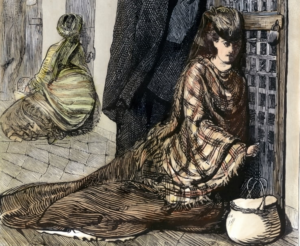
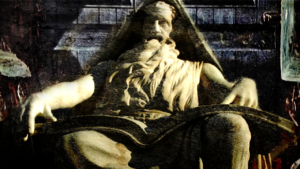
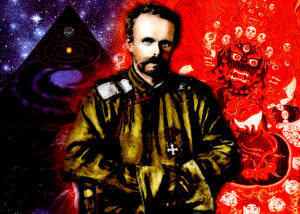
Wonderful analysis. I think you’re on to something!
I’m ready bros
Hold my beer